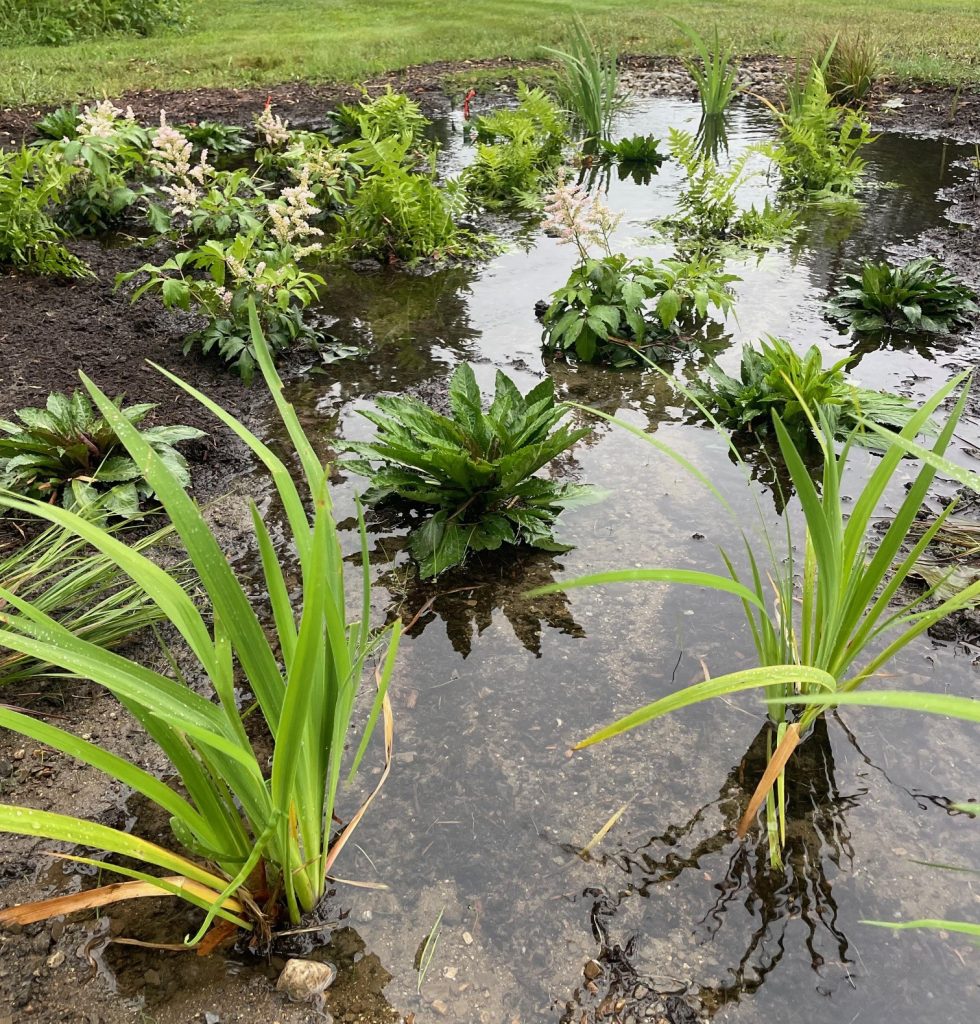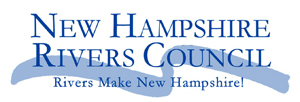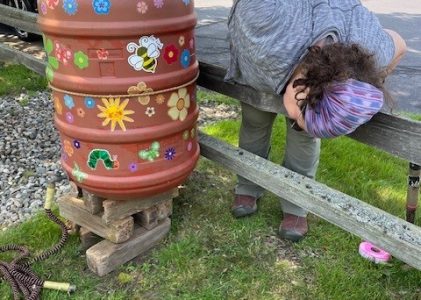Sally Soule, Secretary, Board of Directors
This year marks the second full growing season for the Greenland Central School raingarden. The New Hampshire Rivers Council installed the garden in 2023 in partnership with the school and the New Hampshire Department of Environmental Services. Important annual maintenance activities were conducted this spring and summer to ensure the raingarden continues to flourish and function as designed to remove pollutants from stormwater runoff.
Spring maintenance activities included raking accumulated debris from the garden, trimming old plant growth, inspecting plants to determine viability, and setting up a cistern to provide water for summer irrigation in the event of dry weather. Much of the important maintenance work was organized and led by Greenland resident Jean Eno, raingarden volunteer extraordinaire.
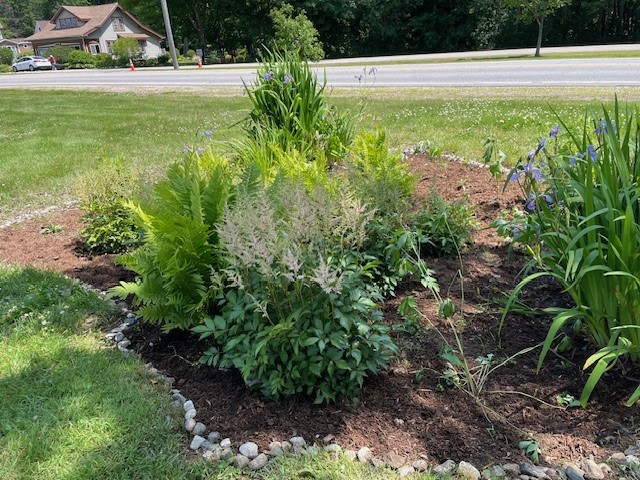
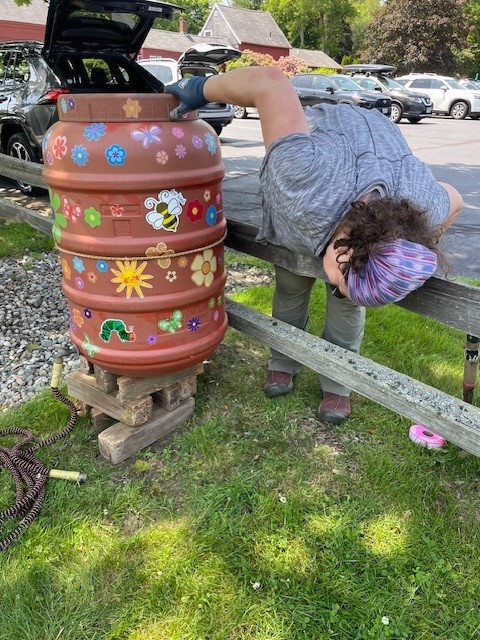
Volunteers returned to the garden during the summer to add more plants to fill gaps in the planted area and increase plant diversity. Pollinator-friendly native plants including hyssop, Joe Pye Weed, and rudbeckia were incorporated into the garden. Many pollinators were seen enjoying these new additions! In July, Jean invited members of the Greenland Conservation Commission for a garden tour to learn about the raingarden’s purpose and the unique partnership that led to its installation.
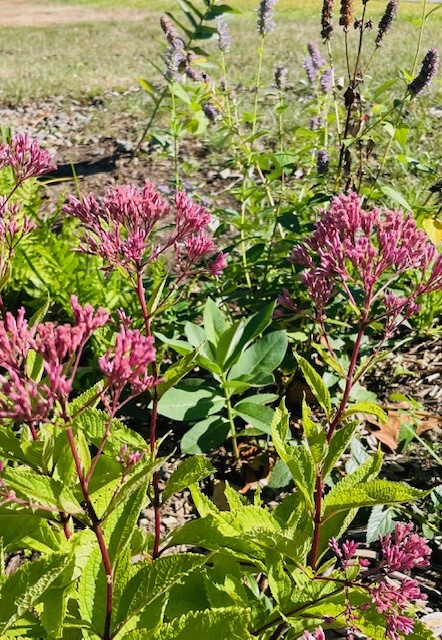
During maintenance visits, it was noted that the blue flag irises planted at the garden’s inlet and outlet areas had grown quite large during the past two growing seasons. This enthusiastic growth clogged important stormwater drainage design features of the garden. A “divide and conquer” volunteer maintenance event was held to reduce the plant growth so that water could once again flow freely in and out of the garden.
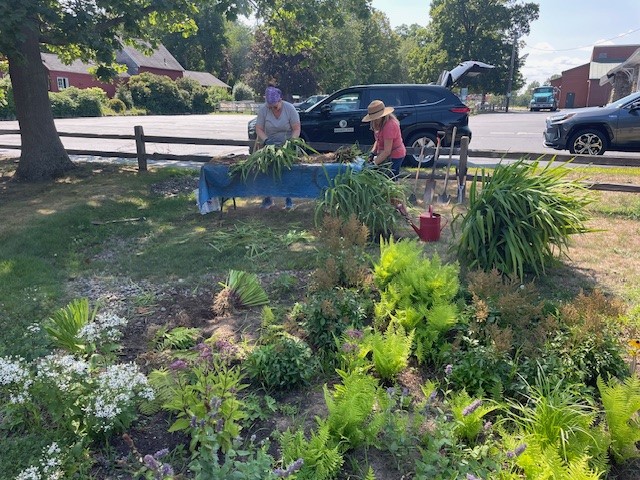
Overall, the garden functions as designed and provides much needed treatment of stormwater runoff. Next steps for the garden include installation of a kiosk which will provide educational information about the raingarden project and its role in improving water quality in the Winnicut River.
